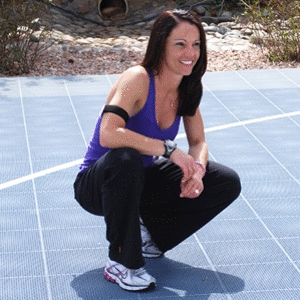Advertisement
Contrary to the popular belief that the core refers only to the abdominal or lower-back region of the body, the core consists of the hips, pelvis, abdominals, lower back, mid-back, and neck regions of the body; essentially, the core is everything but the arms and legs. Like the core of an apple, the core of the body provides a stable platform for our arms and legs to produce efficient movement and force, and is where our center of gravity is located. Because the core encompasses more than just our abs or lower back, effective core training should consist of more than just abdominal or lower-back exercises. Also, the muscles of the core can be divided into distinct categories that have to work together to ensure proper movement and function. Some of the core muscles, especially those located closest to the spine, are primarily responsible for providing stability or preventing excessive movement that could place increased stress on our spine. Other core muscles, generally the larger and more visible muscles in the mirror, are primarily responsible for generating movement. Therefore, an effective core training program should include a variety of exercises that involve stability, or little to no motion, as well as exercises that involve movements in all directions. An example of a stability-oriented core exercise is the plank, whereas an example of a movement-oriented core exercise is a stability ball crunch. Both are effective core exercises; however, selection of appropriate exercises should be based on your fitness program goals.
The core is your entire body basically, excluding your arms and legs. It is where all movement begins and has been described by many as the foundation that ensures proper movement. There are approximately 29 muscles that make up the core of your body and where your center of gravity is located. Your core is more than just your abdominal region so because of this, you really want to train your entire core versus just that particular area. The smallest core muscles are ones that surround your spine and help keep it stable. The bigger muscles of your core are more along the outside of your body and are responsible for moving your spine. There are many exercises that you can do to strengthen your core. I would suggest targeting the inside muscles first to reduce stress to your spine by doing exercises such as a floor or ball bridge. When performing this exercise, try to keep your spine from moving and just allow your hips to lift your bottom off of the ground. This exercise targets the butt muscles but also strengthens the core musculature that protects the spine. Do anywhere from 12-15 reps 3 times at a very slow pace. Once you feel that you can advance from exercises that have little to no motion around the spine, try performing exercises such as a ball or floor abdominal crunch and/or ball back extensions. These exercises will help target the bigger muscles of the spine. When performing these exercises, do 8-10 reps for 2-3 sets at a medium tempo.
Continue Learning about Types Of Exercise Programs
Important: This content reflects information from various individuals and organizations and may offer alternative or opposing points of view. It should not be used for medical advice, diagnosis or treatment. As always, you should consult with your healthcare provider about your specific health needs.

